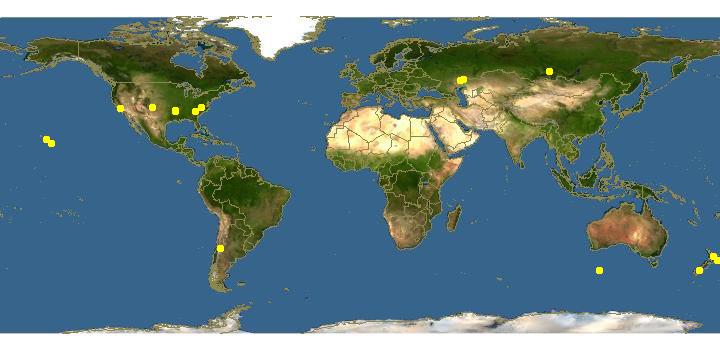
Click on map for details about points.
|
|
Overview | |
Cultivated on oak bark agar made with three times the usual amount of oak bark, on supplemented cornmeal agar with half the usual amounts of dextrose and yeast extract, or on wMY agar (0.02 g malt extract, 0.02 g yeast extract, 0.75 g K2HPO4, and 15 g agar/L distilled water). Grown in association with bacteria isolated from the original substrate, Escherichia coli, Flavobacterium sp., or Florida 20 bacterium. Sporocarp variable in height, 18-91 Ám. Stalk straight, culminating in a very acutely pointed tip, 9-70 Ám in length. Single spore at tip of stalk, globose, minutely punctate, 11-21 Ám in diam. Spore geminates to produce a thin, uninucleate (sometime binucleate) amoeba with many filose subspeudopodia. Pseudopodia of amoeba can fuse to produce large plasmodia but no nuclear fusion is observed. Plasmodia can be reticulate. Prespore cells uninucleate (rarely containing several nuclei), round, and form from single amoebae or segments of plasmodia. Cysts round to irregular to reticular, 10-175 x 10-475 Ám.
|
|
|
Links to other sites | |
|
|
|
Acknowledgements | |
The Eumycetozoan Project -- working to understand the ecology, sytematics and evolution of myxomycetes, dictostelids and protostelids -- the true slime molds.
Sponsored by grants from the National Science Foundation.
|
|
|
Feedback |
Please send any corrections and comments about this page to John Shadwick
Department of Biological Sciences, University of Arkansas, Fayetteville, AR 72701, USA
email: jshadwi@uark.edu
phone: USA-479-575-7393.
|
|
| Supported by | |
Updated: 2024-04-27 04:54:33 gmt
|